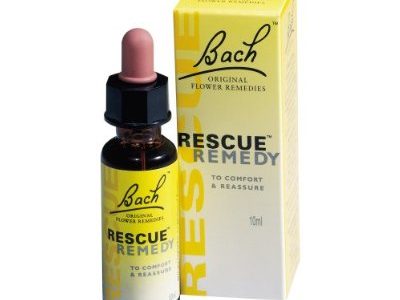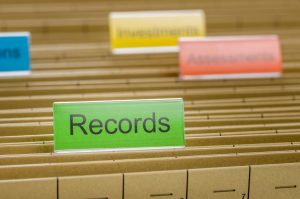Parenting on an one-income household may require a solo parent to apply for financial assistance at some point in time. If the time comes that you need to access the system, having a list of documents you’ll need will come in very handy. Losing that list, or finding yourself having trouble compiling the list, won’t help speed up matters. And, if your process isn’t streamlined, you can miss important deadlines and be forced to start over again. Your friends at Solo Parent Magazine have put together a checklist to help organize the process of applying for assistance. Read on!
Get Forms of Identification for Everyone
The most common forms of identification you will need are a state issued photo ID, birth certificate, and Social Security card. As Homeland Security has such stringent requirements when it comes to identification, obtaining all of these documents can be tricky.
Here’s a list of which documents you will need and how to get those that you might be missing:
- State-Issued ID Card: You need a photo ID to get a state-issued photo ID. Don’t panic; you can use a college or high school ID in order to get your state-issued one. Check here for a list of how to obtain a photo ID in your state.
- Birth Certificate: If you don’t have the documentation required to get your own birth certificate, ask your parents to do it for you. All that’s required to get your child’s birth certificate is a photo ID.
- Social Security card: If you don’t have your Social Security card, apply for one and ask for a verification of application. Until your application is approved and your card sent to you, the verification will confirm your SSN and prove that you have applied for a new card.
In addition to the above, you may need immunization and school enrollment records for your children. If you have lost these, ask your doctor, insurance company, or school for a copy.
Tip: Many counties now offer wallet-size birth certificates, which can be a bit less expensive than the full-sized ones.
Maintain Your Financial Records
When applying for public assistance, accessing your financial records are top priority. There are a couple of ways that you can streamline this process just by keeping a few items on hand.
Income
Before you head for a public assistance interview, you will need a full accounting of the previous year’s income. Print out last year’s tax return, and gather all your previous year’s pay stubs and put them all in one folder. (Note:If you’ve lost your pay stubs, visit the local unemployment office where they’ll be able to give you a printout of your income for the past year.)
If you are self-employed, you have the option of submitting either a written statement declaring what you make every week, or last year’s tax return. If you offer a written statement, they do an automatic 30% deduction for business expenses so be sure to submit only your gross income.
Your income includes child support, earned income (income from working), any payments you receive for rent, insurance, settlements, and any funds you receive for going to college. Print out everything.
In order to properly declare your college funds, you’ll need a copy of your cost of attendance as well as a copy of your disbursements or expected disbursements. You can print all of these documents yourself, or ask your school to do it for you.
Tip: Declared income applies to every single member of a household. If you have a roommate, their income will be required as well — unless you and your roommate buy your own groceries and eat separately, in which case, have your roommate sign a paper stating this fact. If you don’t, your incomes will be combined for SNAP qualifications.
Provide Your Cost of Living
When you apply for assistance, you will be required to provide your entire monthly budget for review. You must, at the very least, have at least one utility bill in your name. There is a standard deduction offered for utilities, so as long as the bill is in your name, you will have access.
Tip: If your outgoing expenses exceed your income, you won’t qualify for any kind of assistance. Case in point: when I went with a friend of mine to apply for assistance, he was refused help because his monthly expenses exceeded his income. When I pointed out that he wouldn’t be seeking assistance at all if his expenses didn’t exceed his income, the agent politely explained that as he was so under water, he might not have a place to live much longer anyway. When I offered that I covered the bills that my friend couldn’t at the end of the month, she added that income, and with a few clicks of the keys, he magically qualified for full benefits. Do the math and see if you use – or need – assistance at the end of the month from someone who might be willing to validate this fact. It could make the difference between qualifying – and not.
Apply for Assistance
The type of assistance you apply for depends entirely on your needs, but there is one fact that is irrefutable: any place you apply is going to insist that you apply for SNAP, and/or TANF and/or Medicaid first. Remember to get a verification of your application before you leave the office so you can take it to any other place you might be applying to.
Tip: If you are in need of assistance immediately, be sure to fill out the section on the form explaining that you need emergency assistance. This expedites your application so that it gets processed faster.
Be Organized
As you can see, there are quite a few documents you need to have on hand at any given time. Gather all of them in one spot for safety and efficiency. Keep one folder in a fireproof box and add to it through the year.
Create a budget and stick to it. There are softwares that can help with this, such as Mint.com and You Need a Budget (YNAB).
Be Timely
When you apply for public assistance programs, be sure to have your application in as quickly as possible. Programs such Project SAFE are need-based, but are also run on a first come, first served basis, as funds tend to run out quickly. Many programs open up in October or November, so make sure you check before you apply. You’ll find that this is the case with most need-based programs, including scholarships, so being timely is important.
Use Benefits Wisely
The way you use your benefits will determine how successful you are in getting over the public assistance hump.
- Always pay for your items with your SNAP card first. If you don’t, you run the risk of forgetting that you have food items in the mix and pay cash when you don’t need to.
- Look into wellness programs. Some states offer cash, or points that convert to cash, when you get wellness checks, flu shots and other vaccines. The points or cash will be put on a card, and can be used toward items that Medicaid and SNAP don’t cover, such as aspirin and bandages.
- Use unemployment benefits to get ahead. Some states even offer a gas card to individuals who are trying to get ahead while working. For instance, if you are a waitress and you are going to school to be a restaurant manager, your local unemployment office may offer a gas card that they reload every week to help you get to and from school.
- Ask about programs for every single utility you have. Whether it’s the water company, phone company, gas or electric provider, ask about any income-based discounts or assistance you might receive.
Finally, take some time for yourself. Managing all this can be very stressful and you need a break from time to time. Something as simple and inexpensive as a $6 facial at the local beauty college can help alleviate some of your stress. And give yourself props for navigating a system that can help your family thrive.







